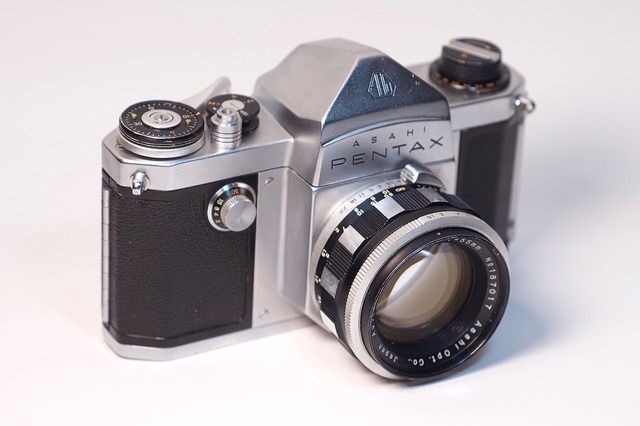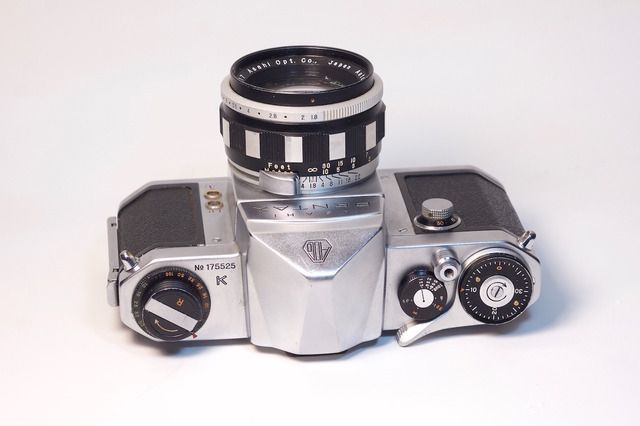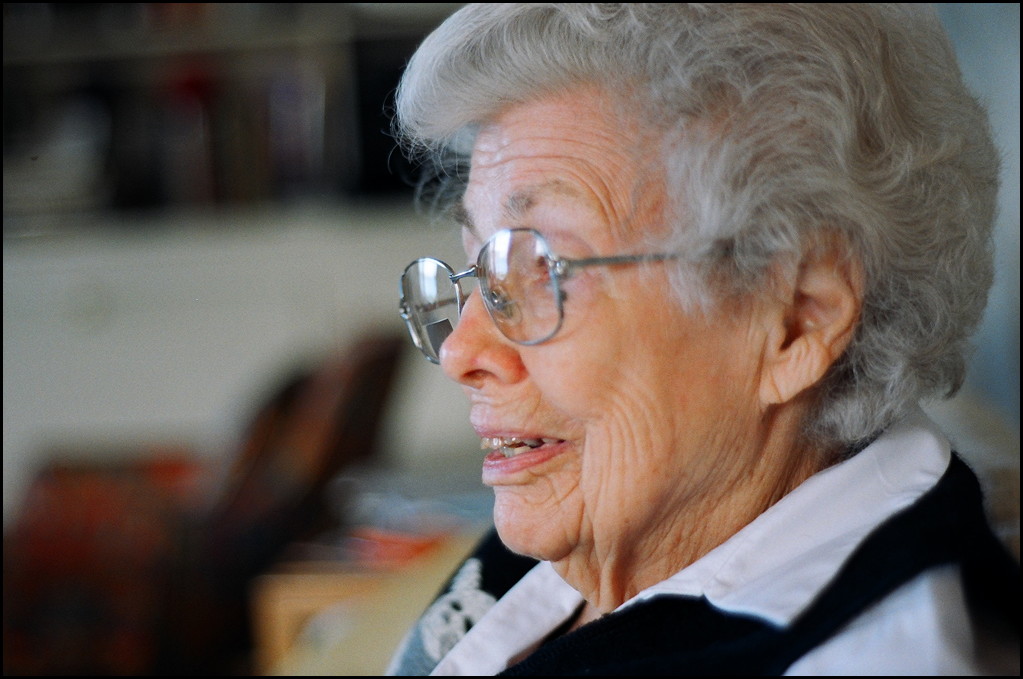darya151
Established
Has anyone here used the classic Pentax K and 55mm 1.8 zebra lens? I am curious about the shooting experience with this combo. I've read it's a bit slower than using a spotmatic. Your thoughts are appreciated!
darya
darya
tunalegs
Pretended Artist
The oldest I had was an H2 model, which is practically the same camera except all shutter speeds were on one dial instead of two. Although I appreciated the quality of the camera, it never felt quite right for me so I sold it off.
The only thing that would make it slower than a spotmatic is the lens, which has to have the aperture manually cocked open after each shot (or just leave it stopped down and focus in the dark). You can always use a newer automatic lens though, in which case there'd be no difference.
The only thing that would make it slower than a spotmatic is the lens, which has to have the aperture manually cocked open after each shot (or just leave it stopped down and focus in the dark). You can always use a newer automatic lens though, in which case there'd be no difference.
Jack Conrad
Well-known
It's certainly an elegant little machine, though I haven't shot with it yet.
I'm still in the fondling and grooming stage myself.
Two things that slow it down compared to later iterations are the shutter
speed wheel (small and fiddly) and the aperture cock on the lens.
Other than that, it feels great in the hand. More solid and well made than the Spotmatic. More compact and the body sits a bit lower.
I'd love to hear from other members myself.


I'm still in the fondling and grooming stage myself.
Two things that slow it down compared to later iterations are the shutter
speed wheel (small and fiddly) and the aperture cock on the lens.
Other than that, it feels great in the hand. More solid and well made than the Spotmatic. More compact and the body sits a bit lower.
I'd love to hear from other members myself.


peterm1
Veteran
Yes I had one. In fact I have owned most of the early pre Spotmatic camera variants and a wide variety of their lenses. I prefer them to Spotmatics as in the hand, because of their smaller size, they feel very like a Leica screw mount camera - with the obvious addition of a pentaprism. The slow speed dial on the front adds to this impression. I also like the semi auto lenses like those on the K model (also found on various other Pentaxes of this era but usually not in zebra tones). There is something about using this early technology which is just a little magical. It does not really slow you down much. All lenses of this era are a little slower to use than modern camera / lens combos though and this is no different. I like this type of lens so much I have bought semi auto lenses in 105mm and 105mm focal length. They are exotic and fun to use. Use it with confidence. You will not regret it.
leicapixie
Well-known
Contrary to internet myths, early Pentax were not reliable!
I was doing Fashion(20+ rolls a shoot), Publicity and news.
I love my Spotmatic and K-1000,K-series, used still.
Doing pro work I was ready to sell off in the 60's, all my Takumars,
'cause the S1a, 1v, S3 (H1, Hv, H3) were continually needing repairs.
My original Spotmatic was used by many photographers all over the world.
I finally retired Spotmatic., as it was totally worn out!
I reckon more than 5,000 rolls.
Used gently early Pentax may be OK.
The Spotmatic one of Japan's finest.
I was doing Fashion(20+ rolls a shoot), Publicity and news.
I love my Spotmatic and K-1000,K-series, used still.
Doing pro work I was ready to sell off in the 60's, all my Takumars,
'cause the S1a, 1v, S3 (H1, Hv, H3) were continually needing repairs.
My original Spotmatic was used by many photographers all over the world.
I finally retired Spotmatic., as it was totally worn out!
I reckon more than 5,000 rolls.
Used gently early Pentax may be OK.
The Spotmatic one of Japan's finest.
Last edited:
zuikologist
.........................
I don't have any experience of the earlier cameras, but I have used three Spotmatics over a long time, and all were reliable and can endorse them as fine cameras.
peterm1
Veteran
One thing I neglected to mention. The aperture cock on this style of lens has a return spring which frequently fails on these old semi auto lenses. I suspect that it breaks just like some antique watch springs did in old pocket watches. The spring is designed to flip the cock back into its starting position after opening up the aperture iris to facilitate viewing thru the lens. It is no great problem though as it just necessitates manually pushing the cock back into it original position after opening the aperture. Just be aware it's a common issue even with careful use after 55 years.
Jerevan
Recycled User
Your experience may vary, but I found out that I had issues with the microprism focus of the Spotmatic but even more with the S1 (same as the H1/H1a in the US). While I loved the construction and feel of the two I had, I had to let them go because of this.
I have a Pentax K with 1.8/55mm Auto Takumar. According to The Ultimate Asahi Pentax Screw Mount Guide 1952-1977 by Gerjan van Oosten, the Asahi Pentax K / Asahi Pentar K / Sears Tower 29 years of manufacture May 1958 - May 1959, number produced 21,454. Serial numbers ~159975-179863 including some S models early on. Mine seems to be among the later ones made.
Asahi Pentax K introduction (1958) brought a new f/1.8 55mm standard lens named Auto-Takumar. It was black + chrome finished with a black + chrome focusing ring similar to Meyer, Schneider and Zeiss Jena lenses of that era. The filter thread still remained 46mm. The 1.8/55 Auto-Takumar lens began a new generation of lenses where the diaphragm stops down operated by the release button of the camera. A lever on the upper side of the lens allows the diaphragm to be reopened for focusing after an exposure has been taken, tensioning the stop-down spring. An instant before the shutter releases, a plate assembly at the bottom of the mirror box pushes a pin located on the lower mount of the lens, releasing the spring and stopping down the iris to the selected value. The optimistic definition "automatic lens" really means "manual opening and automatic closing lens" and it would later be termed "semi-auto diaphragm". The previous year's camera had manual and pre-set lenses only, and the body mount didn't have the pivoting plate that actuates the lens's pin.

My mother at age 90, Christmas 2003

Shadows on motel steps, Feb 2004
Asahi Pentax K introduction (1958) brought a new f/1.8 55mm standard lens named Auto-Takumar. It was black + chrome finished with a black + chrome focusing ring similar to Meyer, Schneider and Zeiss Jena lenses of that era. The filter thread still remained 46mm. The 1.8/55 Auto-Takumar lens began a new generation of lenses where the diaphragm stops down operated by the release button of the camera. A lever on the upper side of the lens allows the diaphragm to be reopened for focusing after an exposure has been taken, tensioning the stop-down spring. An instant before the shutter releases, a plate assembly at the bottom of the mirror box pushes a pin located on the lower mount of the lens, releasing the spring and stopping down the iris to the selected value. The optimistic definition "automatic lens" really means "manual opening and automatic closing lens" and it would later be termed "semi-auto diaphragm". The previous year's camera had manual and pre-set lenses only, and the body mount didn't have the pivoting plate that actuates the lens's pin.

My mother at age 90, Christmas 2003

Shadows on motel steps, Feb 2004
Dwig
Well-known
Has anyone here used the classic Pentax K and 55mm 1.8 zebra lens? I am curious about the shooting experience with this combo. I've read it's a bit slower than using a spotmatic. Your thoughts are appreciated!
darya
There have been a lot of good posts so far. You might also checkout this reference site:
http://www.klassik-cameras.de/Pentax_Main.html
Compared to a Spotmatic, the K is "slower" to use because of these 3 major points.
- Shutter speed setting is somewhat clumsier since the speeds are split between two dials (rotating high speed dial on the top and the slow speed dial on the front) and the upper dial can only be adjusted after the camera is cocked. This is just like the behavior of the Barnack Leicas.
- The lens diaphragm is semi-automatic. It will close automatically from max to shooting aperture, but you have to manually recock the lens separately in addition to winding the film to cock the shutter.
- The camera has no built-in lightmeter so you have to use a separate hand-held meter whereas the Spotmatic series have a meter built-in.
Jack Conrad
Well-known
Contrary to internet myths, early Pentax were not reliable!
The example I have still seems to work fine after all these years.
Besides, I doubt anyone today would bother to buy a K or even a Spotmatic for the purpose of shooting thousands of rolls through it. The Pentax K is a somewhat rare collector camera with a somewhat rare little lens that highlights an interesting place in slr history.
Anyway, if anyone's interested, I just compared the 55/1.8
zebra lens with the slightly later Auto-Tak 55/2, and the zebra
has a larger front element than the f2. That suggests it's not exactly the same lens, as has been suggested in the later Super-Tak 55/1.8 vs the 55/2. A rather trivial detail, I admit.
Also, the Auto-Taks, including the Zebra have 10 aperture blades,
whereas the Super-Taks have 6.
peterm1
Veteran
As an aside I have recently tried mounting a (slightly later model) Super Takumar 55mm f2 lens on a lens adapter (well, OK, on several adapters to be precise - M42 to Leica LTM, Leica LTM to Leica M then Leica M to M4/3) and then used this Heath Robinson arrangement to mount it on my Olympus OMD EM5.
I found that it is one of the crisper lenses and with one of the nicest bokeh characteristics of any lens I have (and I have a lot). In fact when I compared it to the Canon 50mm f1.4 (usually known as the Japanese Summilux) it seemed as sharp or sharper at comparable apertures.
It is a jolly nice little lens which because of its quite small size, sits nicely on M4/3 camera bodies. I have found that the later 55mm lenses perform better than the earlier ones though this may partly be because of lens coatings rather than optical design.
I found that it is one of the crisper lenses and with one of the nicest bokeh characteristics of any lens I have (and I have a lot). In fact when I compared it to the Canon 50mm f1.4 (usually known as the Japanese Summilux) it seemed as sharp or sharper at comparable apertures.
It is a jolly nice little lens which because of its quite small size, sits nicely on M4/3 camera bodies. I have found that the later 55mm lenses perform better than the earlier ones though this may partly be because of lens coatings rather than optical design.
I'm reminded to pass on a warning not to use the 50mm f/1.4 Super Takumar introduced with the Spotmatic on earlier camera bodies. The rear surface of this lens projects inward closer to the film plane, and more importantly, closer to the swinging mirror. It's said that the earlier mirrors are long enough to strike that projecting rear element when set to infinity focus.
However, pre-Spotmatic models made after the Spotmatic introduction have shorter mirrors which will clear safely. But be alert and cautious on this issue!
For instance, I have a Pentax SV made during Spotmatic production that can safely use the f/1.4 lens, but my K and Heiland H3 surely cannot... though I have not tested!
However, pre-Spotmatic models made after the Spotmatic introduction have shorter mirrors which will clear safely. But be alert and cautious on this issue!
For instance, I have a Pentax SV made during Spotmatic production that can safely use the f/1.4 lens, but my K and Heiland H3 surely cannot... though I have not tested!
johnf04
Well-known
I'm reminded to pass on a warning not to use the 50mm f/1.4 Super Takumar introduced with the Spotmatic on earlier camera bodies. The rear surface of this lens projects inward closer to the film plane, and more importantly, closer to the swinging mirror. It's said that the earlier mirrors are long enough to strike that projecting rear element when set to infinity focus.
However, pre-Spotmatic models made after the Spotmatic introduction have shorter mirrors which will clear safely. But be alert and cautious on this issue!
For instance, I have a Pentax SV made during Spotmatic production that can safely use the f/1.4 lens, but my K and Heiland H3 surely cannot... though I have not tested!
The f1.4 lens can't be used on cameras with a green "R" on the rewind knob. It can be used on SV and S1a cameras with a red or orange "R". (Information from "The Pentax Way, by Herbert Keppler).
Jack Conrad
Well-known
That's interesting. My Pentax K has a red R on the rewind knob,The f1.4 lens can't be used on cameras with a green "R" on the rewind knob. It can be used on SV and S1a cameras with a red or orange "R". (Information from "The Pentax Way, by Herbert Keppler).
as can be seen in the photo I posted above.
leicapixie
Well-known
I am forever grateful to Herbert Keppler of Modern Photography,
for writing back, about my repair problems.
H.K was testing an advance copy of the Spotmatic.
He assured me it was a great camera, well up to the task.
My first Spotmatic, in first batch to arrive in South Africa, was truly great!
Other pros who mostly used Medium Format, used Spottie for 35mm.
It went to an International Sports event, where it was pressed into Official service,
by South African news group. Hundreds of rolls in a few days.
The info about 50mm f1.4 lens very important.
Within the year I acquired my Leica M3, I had the Spotmatic.
I was forever wondering about the conflicting systems.
for writing back, about my repair problems.
H.K was testing an advance copy of the Spotmatic.
He assured me it was a great camera, well up to the task.
My first Spotmatic, in first batch to arrive in South Africa, was truly great!
Other pros who mostly used Medium Format, used Spottie for 35mm.
It went to an International Sports event, where it was pressed into Official service,
by South African news group. Hundreds of rolls in a few days.
The info about 50mm f1.4 lens very important.
Within the year I acquired my Leica M3, I had the Spotmatic.
I was forever wondering about the conflicting systems.
Last edited:
Hi -- I see the Pentax and Leica as complementing rather than conflicting. I have been using both since the 60's, often interchangeably. While their abilities overlap, the differences are useful. Years ago when wandering about downtown Seattle for street photos I often carried both, one above the other, with an 85 on the Spotmatic and 35 on the M2. Quick response setup!...
Within the year I acquired my Leica M3, I had the Spotmatic.
I was forever wondering about the conflicting systems.
Wulfthari
Well-known
I am forever grateful to Herbert Keppler of Modern Photography,
for writing back, about my repair problems.
H.K was testing an advance copy of the Spotmatic.
He assured me it was a great camera, well up to the task.
My first Spotmatic, in first batch to arrive in South Africa, was truly great!
Other pros who mostly used Medium Format, used Spottie for 35mm.
It went to an International Sports event, where it was pressed into Official service,
by South African news group. Hundreds of rolls in a few days.
The info about 50mm f1.4 lens very important.
Within the year I acquired my Leica M3, I had the Spotmatic.
I was forever wondering about the conflicting systems.
Interesting story! I have his book and I found it the most useful guide to film photography ever, he must have been a great guy to work with.
Hi -- I see the Pentax and Leica as complementing rather than conflicting. I have been using both since the 60's, often interchangeably. While their abilities overlap, the differences are useful. Years ago when wandering about downtown Seattle for street photos I often carried both, one above the other, with an 85 on the Spotmatic and 35 on the M2. Quick response setup!
Yes, the M4 and the Spottie share some similarities especially in terms of handling, tactile quality and smoothness.
Share:
-
This site uses cookies to help personalise content, tailor your experience and to keep you logged in if you register.
By continuing to use this site, you are consenting to our use of cookies.
